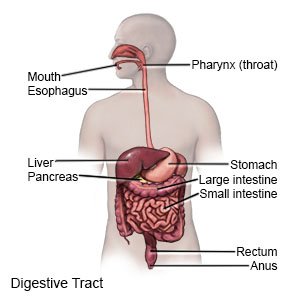Barium Enema
Medically reviewed by Drugs.com. Last updated on Aug 4, 2025.
WHAT YOU NEED TO KNOW:
A barium enema is an x-ray procedure used to examine the lower intestines. Liquid barium is a white, chalky solution that helps healthcare providers see the intestines more clearly. The lower intestines include the large bowel and rectum.
 |
HOW TO PREPARE:
The week before your procedure:
- Your healthcare provider will tell you how to prepare for this procedure. Tell him or her about all medicines you currently take. He or she will tell you if you need to stop taking any medicine before the procedure, and when to stop. Arrange to have someone drive you home after the procedure.
- Tell the healthcare provider if you have ever had an allergic reaction to contrast solution.
- You may need blood, urine, or bowel movement tests before your procedure.
The day before your procedure:
- You may need to drink clear liquids, such as gelatin, broth, or clear fruit juice. Do not eat or drink dairy products. Limit sugar. Avoid nuts, cereal, beans, fried foods, and bread. Increase the amount of water that you drink. Ask your healthcare provider how much to drink.
- Your intestines need to be empty before your procedure. This will help your intestines show more clearly on the x-rays. You may need to take a laxative. This medicine will give you diarrhea to clean out your intestines.
The night before your procedure:
Ask healthcare providers about directions for eating and drinking. You may need a warm water enema to help empty your intestines. Your healthcare provider will show you how to do an enema.
The day of your procedure:
- You or a close family member will be asked to sign a legal document called a consent form. It gives healthcare providers permission to do the procedure or surgery. It also explains the problems that may happen, and your choices. Make sure all your questions are answered before you sign this form.
- Do not eat or drink anything on the morning of your procedure. The pictures may not be seen clearly if your stomach is not empty. You may also need another enema.
- Take only the medicines your healthcare provider told you to take.
- An IV will be placed into a vein. You may be given liquids or medicine through the IV.
- Anesthesia may be given to help prevent pain.
WHAT WILL HAPPEN:
What will happen:
- Your healthcare provider will give you medicine that will help relax your intestines and rectum. X-rays will be taken before the barium enema is given. During a single contrast barium enema, a soft tube with lubricant jelly will be gently placed into your rectum. The barium is then passed through the tube and into your lower intestine. A small balloon on the tip of the tube may be inflated to help hold the barium in your intestine. You may feel pressure and mild discomfort. You may have an urge to have a bowel movement. Pictures will be taken as the table moves and you change positions.
- During a double contrast barium enema, the barium will be drained out of the rectum. Your healthcare provider will then put gas into the tube to help expand your intestine. Pictures will be taken to see how the gas moves inside your intestine. When the procedure is finished, the tube will be removed. You may then go to the bathroom and get rid of as much barium as possible. More pictures may be taken after you have emptied as much barium as possible from your intestine.
After your procedure:
You will be taken to a room to rest until you are fully awake. Healthcare providers will monitor you closely for any problems. Do not get out of bed until your healthcare provider says it is okay. When your healthcare provider sees that you are okay, you may be able to go home.
CONTACT YOUR HEALTHCARE PROVIDER IF:
- You have a fever.
- You get a cold or the flu.
- You have questions or concerns about your procedure.
Risks
You may have abdominal cramps or an abnormal heartbeat. You may bleed more than expected. The barium may become hard and cause a blockage in your intestines. Your intestines may tear due to increased pressure. This may cause bowel contents to leak out of the intestines into your abdomen.
Related medications
Care Agreement
You have the right to help plan your care. Learn about your health condition and how it may be treated. Discuss treatment options with your healthcare providers to decide what care you want to receive. You always have the right to refuse treatment.© Copyright Merative 2025 Information is for End User's use only and may not be sold, redistributed or otherwise used for commercial purposes.
The above information is an educational aid only. It is not intended as medical advice for individual conditions or treatments. Talk to your doctor, nurse or pharmacist before following any medical regimen to see if it is safe and effective for you.
Further information
Always consult your healthcare provider to ensure the information displayed on this page applies to your personal circumstances.
